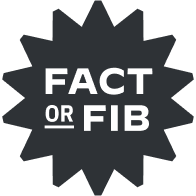What's the only state flag with a double-sided design?
Thursday, May 23, 2024
 Make every day more interesting. Each day a surprising fact opens a world of fascinating information for you to explore. Did you know that….?
Make every day more interesting. Each day a surprising fact opens a world of fascinating information for you to explore. Did you know that….? 









| Original photo by Buddy Mays/ Alamy Stock Photo |
| Oregon is the only state whose flag has a design on both the front and back. | Many U.S. state flags have some strange quirks. The Virginia flag, for example, contains some tasteful nudity (thanks to its depiction of the famously bare-chested Amazons), and Maryland's flag — a concoction of red crosses and black-and-yellow block patterns — looks more at home on a medieval battlefield than in 21st-century Annapolis. But Oregon has one of the most unusual state flags of them all. True, at first glance it looks relatively unremarkable: Emblazoned with the phrase "State of Oregon" on top and "1859" on the bottom, the blue-and-gold flag displays 33 stars, representing its admittance as the 33rd state of the Union in (you guessed it) 1859. These five-pointed stars encircle Oregon's state seal, which features an ox and wagon traveling the Oregon Trail, while other natural elements including trees, mountains, and the Pacific can be seen in the distance. An eagle is perched atop the vignette for good, patriotic measure.
But what makes the flag stand out among all the other 49 state flags is that it has a separate image on the reverse side — a giant golden beaver, one of the state's symbols and an important animal in Oregon's history thanks to its role in the fur trade. Many flags used to have different images on the obverse (front) and reverse sides, but the cost and complexity of manufacturing two-sided flags led to an array of single-sided redesigns. Oregon became the last state with a two-sided flag after Massachusetts changed its banner in 1971. However, it shares some camaraderie with the South American country of Paraguay, the only nation in the world with a two-sided national flag. Based on the French tricolore but arranged horizontally, the obverse side of the flag features the country's national coat of arms, while the reverse displays the seal of the treasury.
|
|
 | | Landlocked Paraguay has no navy. | | |
|
|
| Landlocked Paraguay has no navy. |  |  |
|
|
|
|
|
| The Best Hearing Aid in 2024: "The Clarity Is Unbelievable" | | Imagine this: You're in a crowded restaurant. You're with friends, family, colleagues — take your pick. There's music playing, people all around, and it's not super easy to hear the conversation. What do you do? Here are your options: You can lean in, read lips, ask for repeats, or… you could give this tiny new hearing aid a try. hear.com's new bestselling device is making conversation effortless, even in background noise, and the clarity is unbelievable. So if you want to join 350,000 happy customers and give the hearing aid a try, you know what to do: Click below! |
|
|
|
| The only things on Alaska's state flag are the __ constellation and the North Star. |  |
|
|
 | Numbers Don't Lie |
|
 | | Estimated number of ghost towns in Oregon, more than any other U.S. state | | 200 |
|
|  | | Versions of the U.S. national flag that have existed since 1777 | | 27 |
|
|
|
 | | Year the "South Pass" through the Rocky Mountains was discovered, increasing migration to Oregon | | 1812 |
|
|  | | Possible number of beavers in pre-European North America | | 200 million |
|
|
|
|
|
 | No one knows for sure where the word "Oregon" originated. |
|
| The origin of the word "Oregon" is still a mystery, but not for lack of trying. Historians and linguists have offered up several possible solutions, though no definitive answer exists. The first reference to a similar word appears on a 1715 French map naming the Wisconsin River as "Ouaricon-sint." The French also referred to the Columbia River, which borders northern Oregon, as "Le Fleuve aux Ouragans" ("Hurricane River"). Other theories for the origin of the term connect it to the herb oregano (although the reason for the link is unclear), Aragon (a French synonym for Spain), or a portmanteau of the Shoshone words ogwa, meaning "river," and pe-on, meaning "west." But the leading theory comes from a 1765 proposal to King George III from a colonial major named Robert Rogers, asking for funds to find the elusive Northwest Passage by means of exploring "the River called by the Indians Ouragon." The word "ouragon" was likely derived from the Mohegan word wauregan, meaning "the beautiful." Originally, the Mohegans, a tribe based in Connecticut, used the word to describe the Allegheny-Ohio River, but Rogers' experience using Mohegans as troops during the French and Indian War (1754–1763) possibly influenced his description of a watery pathway to the Pacific, perhaps because he thought using a transplanted but "authentic" Indigenous name would strengthen his request for funds. | | |
|
|
|
| Thank you for supporting our advertisers. They help keep Interesting Facts free! |
|
|


posted by June Lesley at 5:29 AM


![]()
![]()
![]()
![]()
0 Comments:
Post a Comment
<< Home